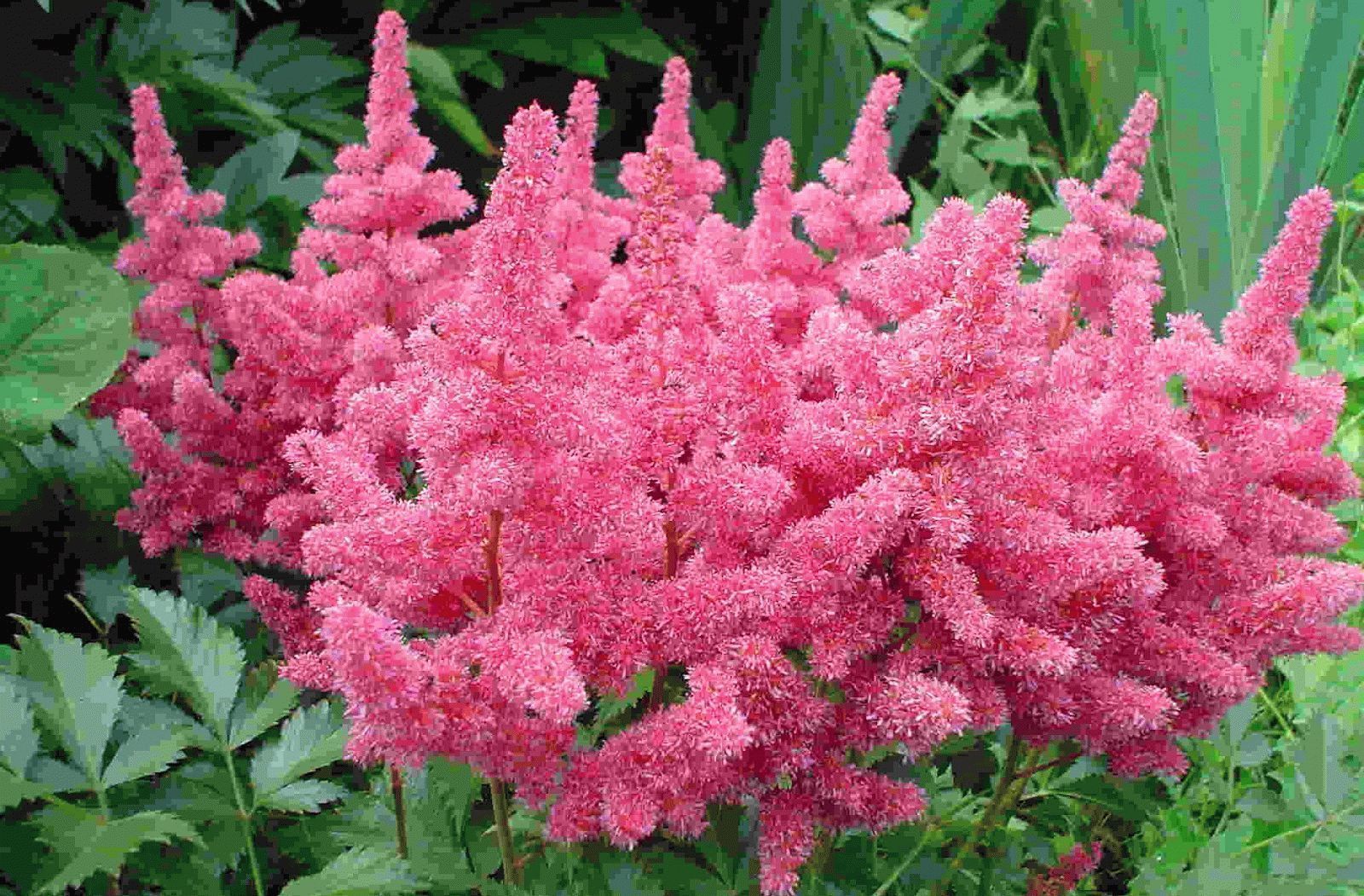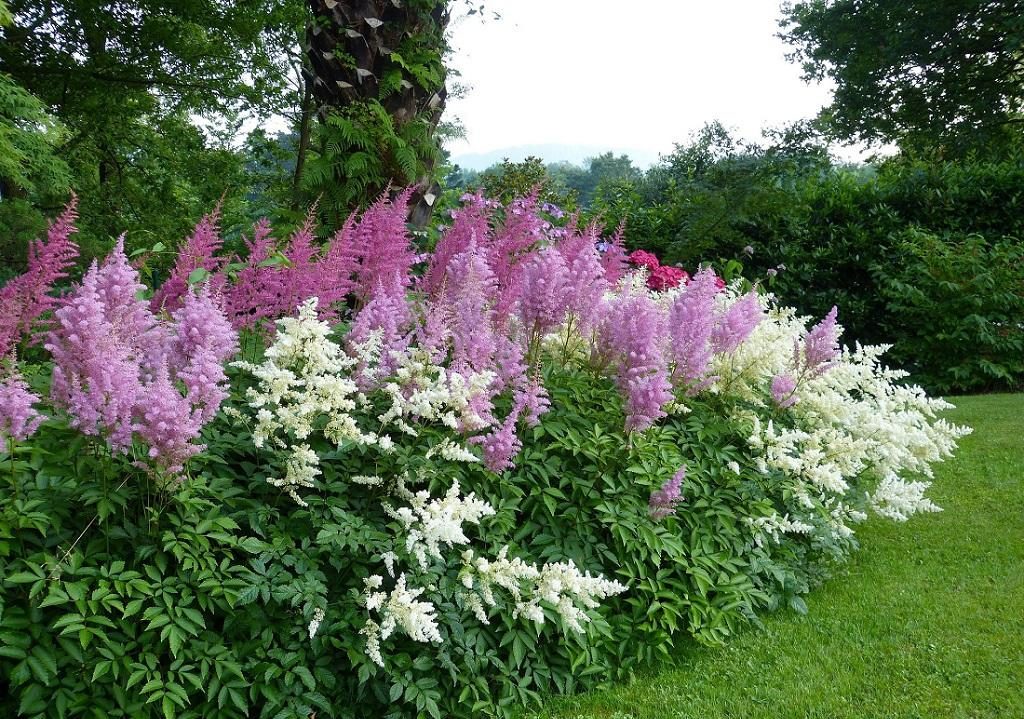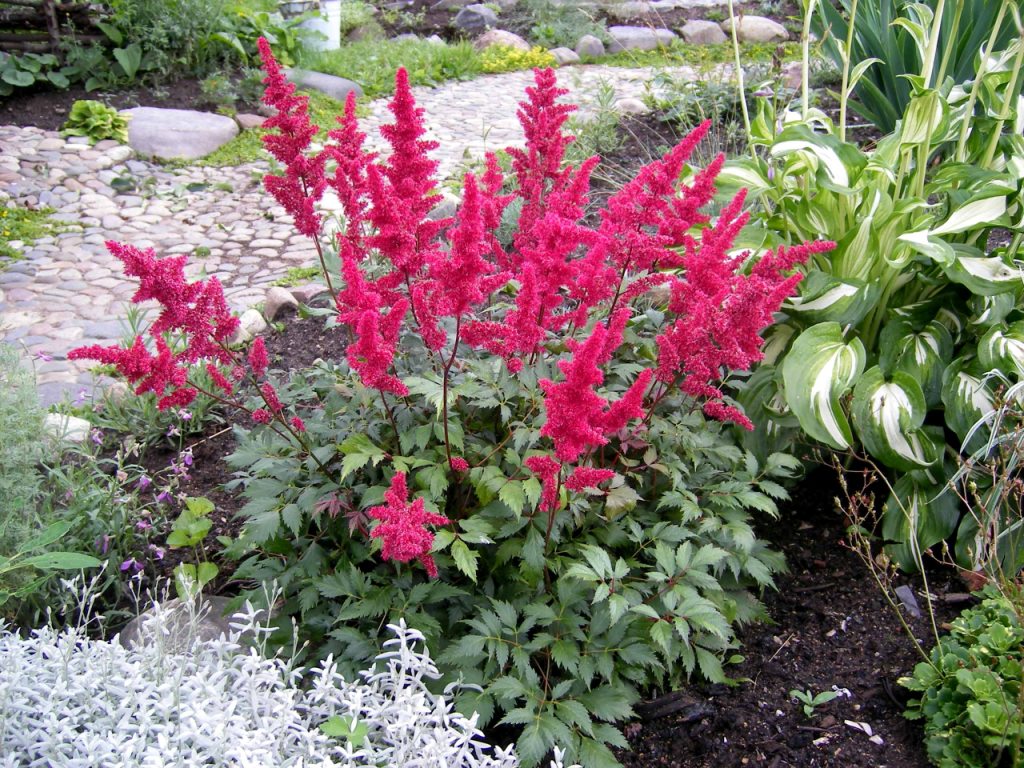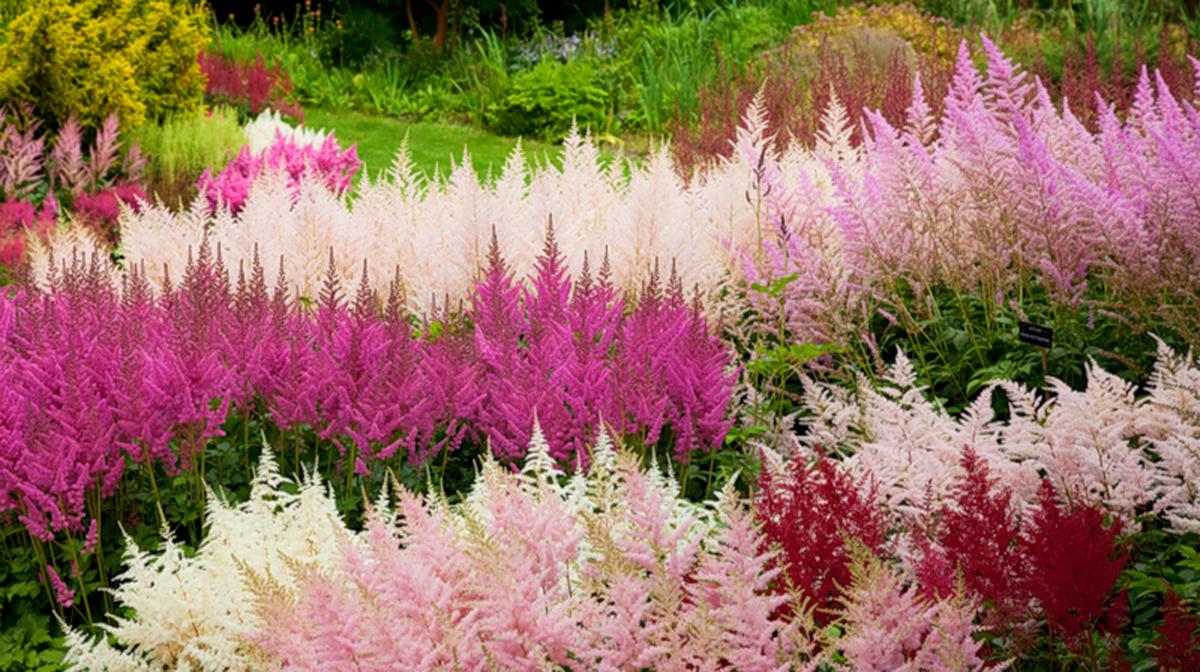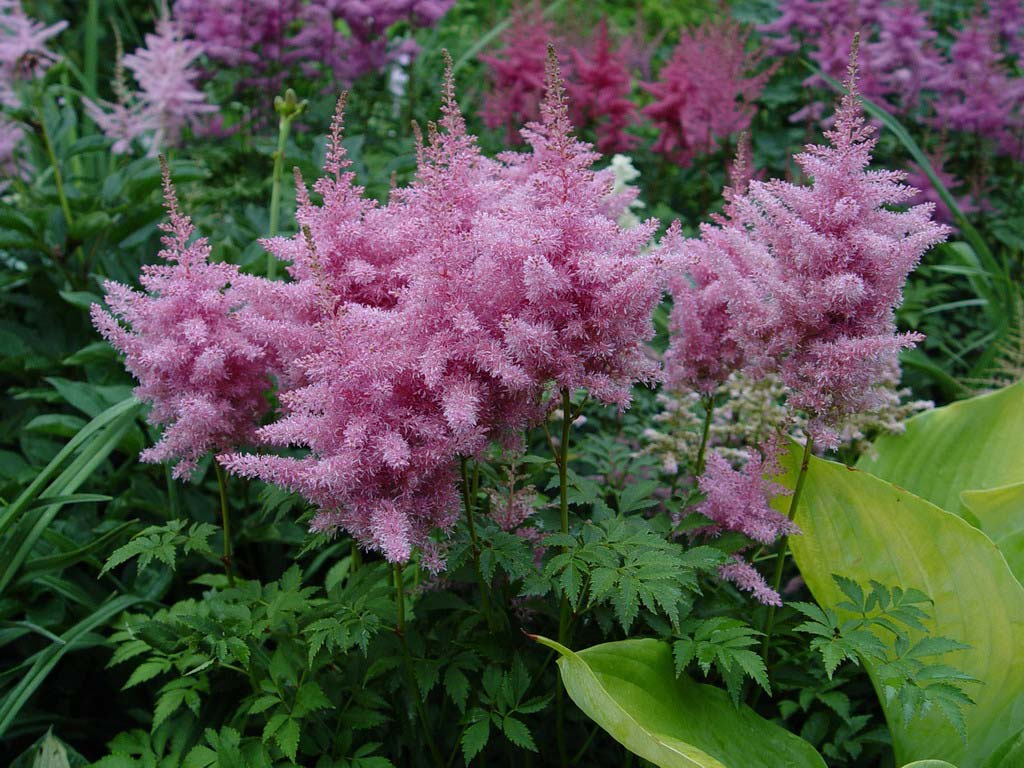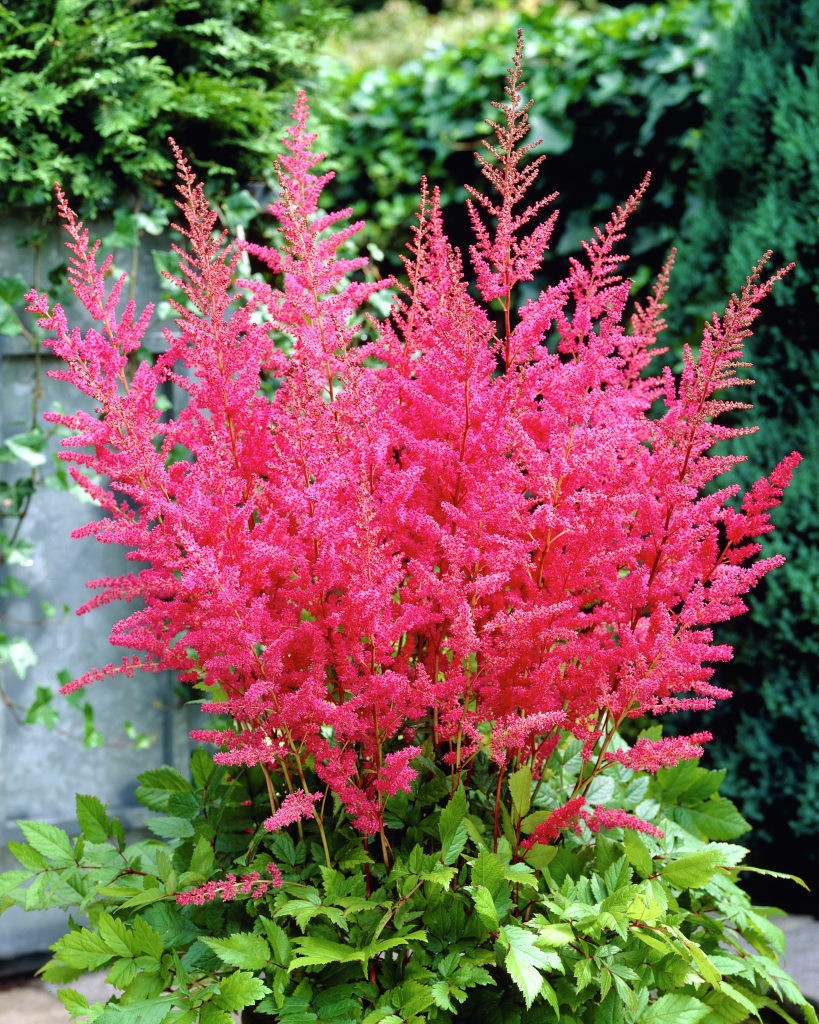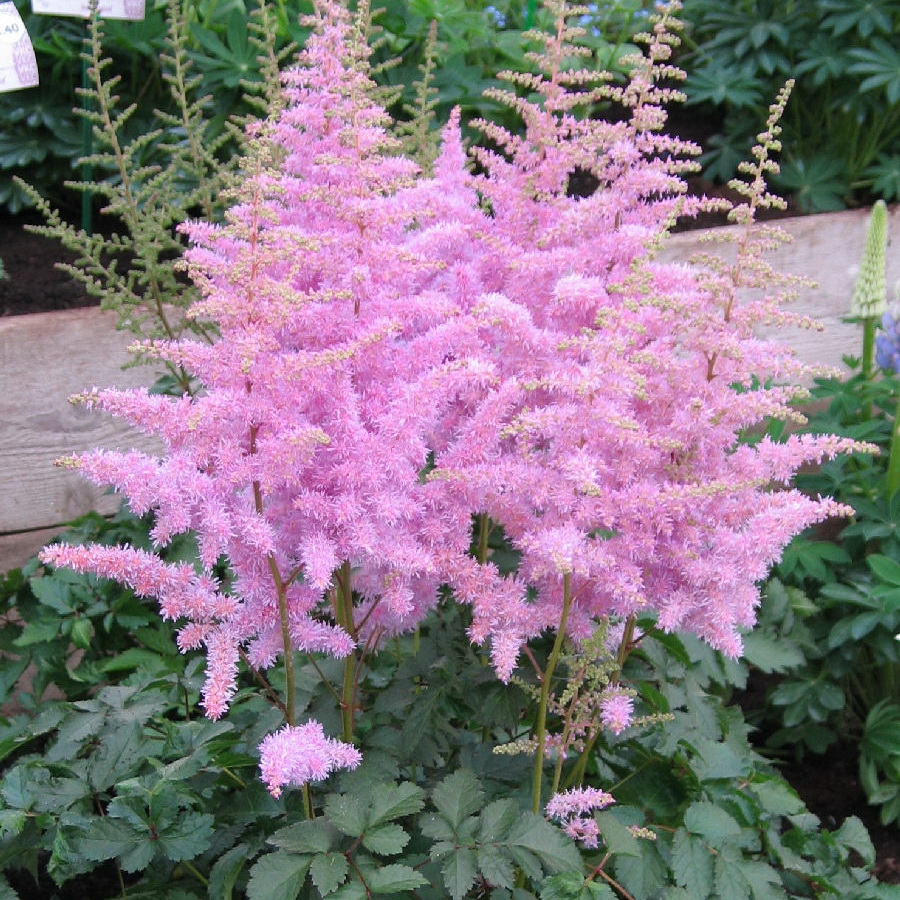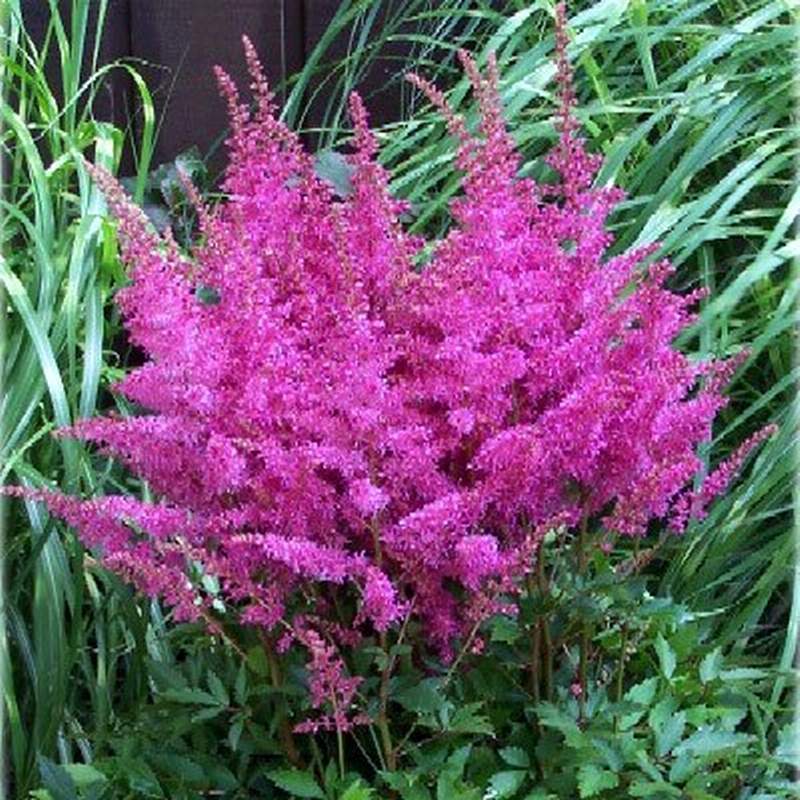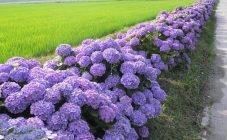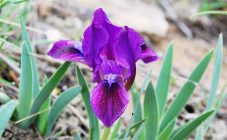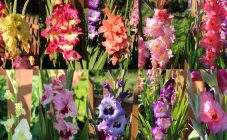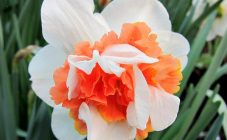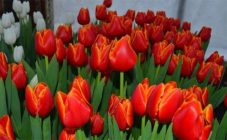Content:
Among the representatives of herbaceous perennial plants, astilba is considered one of the most amazing. Scientists have more than 25 species of this flower. His homeland is East Asia, regions of North America, Japan. In nature, it grows in deciduous forests and on river banks. Breeders have bred many varieties and hybrids of this plant, which will be discussed below.
Description of astilba
A perennial flower of the Stonefragment family has erect stems dying off for the winter. The density of the stem depends on the variety: it can be loose, but there is also a dense, almost woody. The height of plant stems, depending on the species, can be different: from 10 cm to 2 m.There are dwarf species in which the stems are no longer than 30 cm, for example, the Chinese astilbe Curly Lilliputian or Naked, 15-20 cm tall. Not much higher than these astilbes Cappuccino, its height is no higher than 40 cm.And Astilba Pomegranate has stems up to 2 m high.
The leaves of the shrubs are feathery or carved, in most species they are dull, dull, without shine, but they are also shiny. The color of the leaves is dark green, sometimes with a red tint, the foliage of some varieties may be outlined with a white border. They grow on long reddish petioles, jagged along the edges.
Astilba's flowers can be of different colors: pink, lilac, white, light lilac and red. The inflorescences collected in the brush from a distance resemble panicles. Flowers are pyramidal, diamond-shaped, drooping.
Rhizomes of all perennials are dense, branched. On the roots that are closer to the surface of the soil, young root buds are formed every spring. And the lower part of the rhizome gradually dies off.
The most common are astilbe varieties obtained by crossing the David variety with other representatives of this genus. These are spreading bushes with leaves of dark green color, medium-sized or short, for example, Arends's astilbe. It reaches 1 m in height, can bloom with white, bright red, dark lilac or pink inflorescences. The flowering period is more than a month (from early July to mid-August). Gloria, Diamant, Rubin and others are also popular, not exceeding 1 m.For example, Diamant is only 90 cm high.
Basic principles of agricultural technology
Growing a perennial and caring for it will not be difficult. Growing requirements are slightly different, depending on the type and variety of astilbe.
The plant is propagated in 3 ways:
- seeds;
- vegetatively (dividing the bushes);
- separation of the roots from the bud (carried out in April-May).
The most common breeding method for astilba is growing from seeds. To get a good result, the seeds are pre-stratified before planting, keeping them in the dark at low temperatures and high humidity. In February-March, after the procedure, the seeds in the same soil are transferred to a lighter and warmer place, covered with foil and watered.
Seedlings are planted in open ground with the onset of May days or in early June, choosing shaded places. Most varieties of this plant feel more comfortable among tall trees where contact with the sun is limited, such as Astilba Arends America.Perennials are more often planted in cold regions of Russia or the Baltics.
Of the soils, moist loose loams with an acidity of 5-6.5 are preferable.
Plants need plenty of watering, especially if it's hot outside. Shrubs have a hard time during periods of drought.
For normal growth and development of a plant, it needs hilling and feeding. In the spring, when the first shoots begin to appear, the plant is spud up for the first time and fed with humus. At the beginning of summer, fertilizers with potassium are added to the soil, when the flowering period ends, the plants are fed with phosphorus. At the stage of active growth, the shrub needs nitrogen (bird droppings or fermented mullein). Before the onset of the winter period, fertile soil is poured onto the roots.
Plants are susceptible to attack by pests such as pennies and nematodes. But among the varieties of perennials, there are those that are resistant to these pests.
What is distillation
For those flower growers who want the beauty to bloom in a greenhouse, indoors in winter or early spring, experts recommend distilling perennials.
For distillation, bushes are dug in September. In this case, young plants grown from new buds are chosen. You can use shrubs two or three years old. If large adult bushes are taken, they are carefully divided in half or into 3 parts.
The earth must be nutritious. It includes: turf soil (2 parts), leafy soil (2 parts), sand (1 part) and two parts of humus or the same amount of compost.
The pots, along with the plants planted in them, are placed in a shaded greenhouse, constantly watered, preventing the earth from drying out. Before the onset of cold weather, perennials are covered with additional insulated frames. With the arrival of winter, the pots are transferred to a room with a temperature of 14 degrees, and when the leaves begin to appear, the temperature is raised by 2-3 degrees.
You can grow a perennial in this way with the goal of achieving earlier flowering outdoors. If the plants are transferred to a greenhouse in February or early March, and then in April, to open ground, they will begin to bloom in early spring after they return to the open ground.
Astilba: varieties
TOP 10 most popular breeding varieties of this plant.
Amethyst
Refers to early flowering. The bush grows to a height of 1 m, has small, carved leaves of a greenish-brown hue. Flowers are collected in blue-violet panicles. The diameter of the flowers is about 5 cm. There is almost no smell. Blooms early, blooms for more than a month. Hardy, prefers shade and abundant irrigation.
Arends
The hybrid blooms in mid-summer. The bushes grow up to 160 cm. The leaves are small, dark green, there are few of them on the bush. Flowers are collected in large panicles (up to 50 cm), pink, large, exude a delicate delicate smell. This astilbe blooms all summer, loves good lighting, does not tolerate severe frosts.
Visions Red
Belong to the Chinese varieties. It blooms from the end of July. Grows compact. The length of the stems of the plant is no more than 30 cm. The variety has large, shiny, bright green, carved leaves. Flowers of a purple hue, collected in spreading panicles. The variety withstands frost, prefers shady places.
Gloria white
It has a height of no more than 70 cm. Leaves with long petioles, dark green, with white edges at the edges, carved. The flowers are combined into lush inflorescences, small, very brittle. The flowers themselves are small and emit a strong smell. The shrub grows in the southern regions of Russia, because it does not withstand frosts.
Astilba Garnet
It belongs to simple garden perennials and can grow up to two meters in height. Leaves are "glossy", openwork, located closer to the roots. Flowers are dark red, large. Panicles occupy more than half of the stems and have a slight honey smell.
Astilba Diamant
Is the result of hybrid crosses by the breeder Arends. The perennial shrubs are spreading, about 1.5 m tall. Small green leaves of medium size usually grow at the roots. The flowers are white, large (up to 8 cm in diameter), collected in panicles, emit a light aroma. The bushes bloom for about 40 days. Flowering begins in mid-July. The variety grows well in the Moscow region.
Variety Europe
Refers to Japanese early flowering, has low spreading bushes. This astilbe is distinguished by bright openwork green leaves. In paniculate inflorescences, the flowers are large, pale pink. Flowers have no smell. Buds bloom from the end of spring. This variety is frost-resistant, loves shady places and a lot of moisture.
Lavender variety
This is an early flowering shrub, spreading, tall (up to a meter). Leaves grow more often at the roots, dark green in color, glossy, small. The perennial has a lot of them. This makes the variety different from others. The inflorescences are not very lush and long (their length is only 25 cm). Small flowers, lavender shade, emitting a strong smell. It can bloom all summer long, grows well in sunny areas.
Astilba Montgomery
Similar to the previous variety. It is distinguished from other varieties by leaves. They are shiny, large, strongly divided, triple in the plant. There are much fewer of them than the Lavender variety. There is no smell of flowers.
Hybrid Nemo
It differs from the previous ones in a shorter stem length, large leaves, bright pink flowers of large diameter. The variety is popular among gardeners for the reason that it does not succumb to diseases common among this kind of plants.
Variety of choices for flower beds and flower beds
The species of this perennial are very diverse. They are divided into groups according to various characteristics. Moreover, in each of the groups there are the best samples that are ideal for decorating any garden plots.
If flower growers dream of astilba pleasing to the eye all summer long, you can combine varieties of early flowering varieties (Purple Rhine, Rhythm Blues), medium flowering (Red Serpentine, Burgundy Red astilba, Astilba Unique Carmine) and late. When forcing, early flowering shrubs bloom already in April, and by September astilbe of late flowering (Henny Grafland, Spinel) will bloom. Then the wonderful flowering, starting in June, will last almost until September.
Breeder Arends has developed several varieties of this beautiful perennial, which have become very popular among amateur flower growers. Among them, the following varieties are considered the best: Astilba America, Astilba Arends August Light, Astilba Arends Brautschleier, Astilba Sister Teresa, Etna.
Astilba Red Charm also unites several varieties that distinguish bright red flowers in a series of perennials, united in large panicles, compound leaves pointed upwards and strong branches. Astilba Etna is distinguished by its large maroon panicles.
In some species, the bolls turn green for a long time in the flowerbed (for example, Brida Veil), and in some they turn red and even decorate the garden in autumn (Glow). In such varieties, you can not cut the stems for the winter, leaves with panicles will serve as a cover and hold back the snow, and panicles will decorate the garden.
The shrub adjoins well with conifers, which protect it from overheating on hot days. Also, plants can perfectly decorate any garden composition in the vicinity of deciduous trees, which will protect fragile panicle inflorescences from the wind.
Some (for example, Astilba Fanal) look great on lawns, flower beds and rabatki. Astilba Color Flash and Erica's astilba, which have reddish leaves, easily get along in garden design.
Many fans of non-standard design are attracted by varieties with unusual flower shapes (Hip Hop, Flamingos) or beautiful blood-red stamens (Flamingos).
Japanese varieties will decorate border compositions along the paths (Lilliputian, Curly). And the likes of Astilba Straussenfeder, Astilba Thunberg and Astilba Washington are delicious in group plantings.
Astilba varieties of Unix are wonderful. They are distinguished by "delicate" inflorescences. Especially beautiful are the varieties Unix White, Cerise, Unic Silver Pink, Unic Lilak, Unic Ruby Red.
Astilba Koblenz, Spartan, astilba Cattleya, Bronzlaub and Gladstone look unusual. Astilba Thunder and Lightning is distinguished by an unusual combination of light green leaves with large purple inflorescences. Astilba Purple rain looks about the same fantastic. These varieties differ in a shade of foliage and peduncle stems.
Among the popular in the northern regions of Russia are Amethyst, Gloria, Glut, Hyacinth and Rubin. Often there are varieties of Naked, David, Arends Fanal, Astilba Radius, Purple Feather, Valeria, Avalanche, Astilba Perkeo, Betsy Kuperus and Chinese varieties: Vijins Inferno, Visions in red, Pumilo, Astilba Dauria, Superba. These perennials are used to decorate alleys and borders.
The variety of astilba varieties is amazing. With the help of a shrub decorated with luxurious panicle inflorescences, you can make an incredible original composition in a flower garden or garden.
